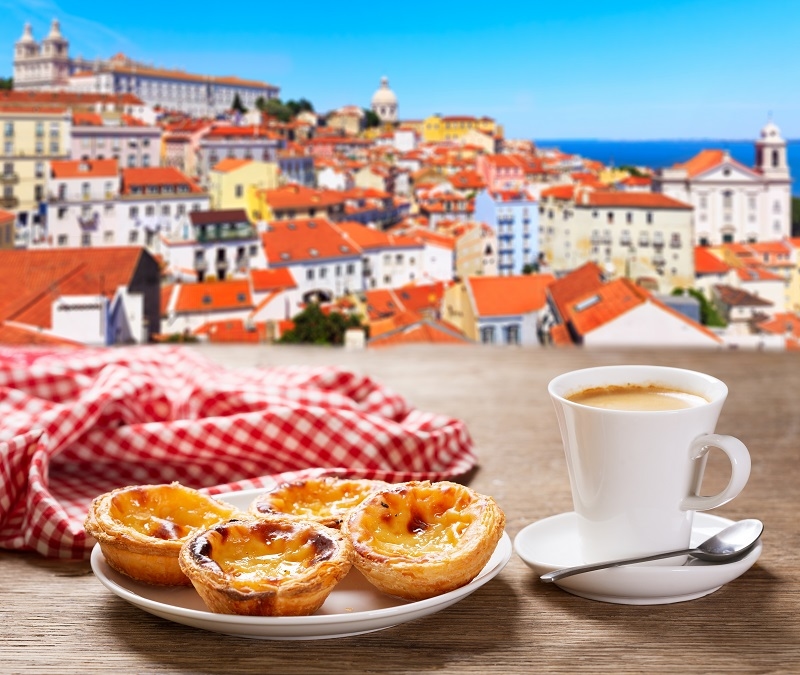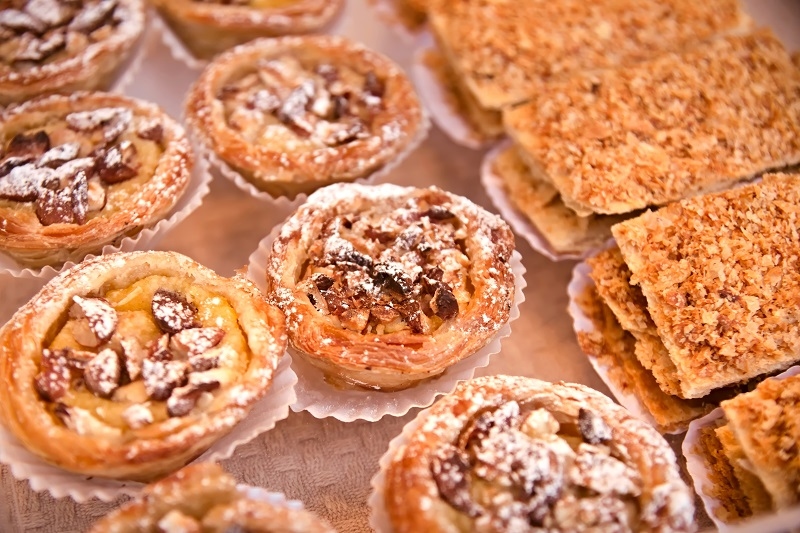
The magic of Portuguese cakes lies in the country’s ability to combine history, taste, and cultural identity into every chew. From the iconic pastel de nata, a flaky custard tart cherished internationally, to hidden gemstones decided in small fishing towns, every sweet tells a story of culture and geography. Rooted in convent recipes, formed by way of seafaring tradition, and subtle in bustling cafés, Portugal’s sugar historical past is as rich as its shoreline. Exploring Portugal's bakery way of life and indulging in Portugal's traditional sweets gives a deeper flavor of the country’s soul. This Portugal dessert guide ensures you don’t miss a single flavor on your coastal adventure.
Portuguese cakes are not simply after-meal indulgences; they're appropriate for ingesting history lessons. Many recipes hint once more to the 15th and 16th centuries, at the same time as monasteries created candies from surplus egg yolks left after the usage of egg whites for wine fining and starching conduct. Sugar from colonies and spices from exchange routes further enriched those creations.
Today, those candies are celebrated worldwide, but their roots remain proudly neighborhood. From Lisbon’s cafés to Portugal's seashore desserts alongside the Algarve, those confections encompass centuries of historical past.
No dialogue of Portuguese cakes is complete without the mythical pastel de nata. This flaky pastry packed with creamy custard has turned out to be the USA’s culinary ambassador.
The pastel de nata represents every religious history and everyday indulgence. Its caramelized top, touchy crust, and heat filling characterize the beauty of the Portuguese bakery lifestyle. Pairing it with robust coffee is a ritual repeated limitless times each day.
In Portugal, bakeries are more than just places to capture a brief bite—they’re a part of the us’s cultural heartbeat. Step into any community café and you’ll also locate locals gambling candy treats, speaking to pals, and beginning their day in actual Portuguese style.
Exploring Portugal’s bakery manner of life suggests that pastries right here are more than just meals—they’re woven into the rhythm of everyday existence.
Beyond the pastel de nata, the use of a gives a treasure chest of Portugal traditional sweets. Each vicinity offers its flair, tied to factors, weather, and nearby records.
Sampling those Portugal conventional sweets connects tourists to the neighborhood sort of Portuguese gastronomy.
Coastal towns decorate the repertoire of Portuguese cakes, infusing the maritime way of life into their goodies. Fishermen’s villages often encourage recipes reflecting both abundance and creativity.
Exploring Portugal seaside cakes is ready tasting innovation influenced by way of way of geography and seafaring subculture.

In addition to its beaches, the Algarve is known for its confections, which showcase the inventiveness of the southern Portuguese and the Moorish past.
These Algarve candy treats show that the area’s desserts are as fascinating as its coastline.
For first-time visitors, navigating the Portuguese cake industry might be difficult. The essentials to make the most of your confectionery adventure are highlighted in this guide to Portuguese desserts.
A nicely planned Portugal dessert guide guarantees you taste records, tradition, and creativity in each region.
Portugal celebrates its chocolates with galas devoted to culinary history.
These gatherings emphasize how Portugal's traditional sweets remain a loved cultural pillar.
Pairing Portuguese cakes with wines enhances each taste, from pastel de nata with port to Algarve chocolates with Madeira. This manual highlights the exceptional wine fits, supplying a real taste of Portugal’s culinary and cultural heritage.
Portugal is as famous for its wines as its chocolates, and pairing them creates magical culinary moments.
Through considerate pairings, vacationers can increase their Portugal dessert experience into a gourmet adventure.
While rooted in records, Portuguese desserts hold. Chefs check with greater healthy variations, vegan variations, and sustainable additives. These upgrades align with cutting-edge global traits even as honoring conventional recipes.
Even coastal reviews like Portugal water excursions and Portugal eco snorkeling sometimes combine meals and tastings, permitting travelers to explore both sea and goodies in a single itinerary. This merging of culinary and ecological tour highlights Portugal’s ability to conform while celebrating its roots.
Every candy chew connects vacationers to Portugal’s heart. Monastery recipes tied to faith, Portugal beach desserts mirror maritime resilience, and Algarve sweet treats encompass southern creativity. Together, they form a suitable map for ingesting the us’s identity.
For website traffic, indulging in Portuguese desserts is more than a culinary prevent—it’s a deeper cultural immersion that bridges past and present.
From the creamy layers of pastel de nata to the almond richness of Algarve candy treats, Portuguese cakes are treasures of taste and way of life. Exploring Portugal's bakery tradition, indulging in Portugal's conventional chocolates, and following a curated Portugal dessert guide, we can help vacationers experience history through taste. Whether sampled at beach cafés or festive markets, those delights are proof that Portugal’s sweetest reminiscences are meant to be savored. Relish the history, and don’t bypass these confections in your journey.
This content was created by AI